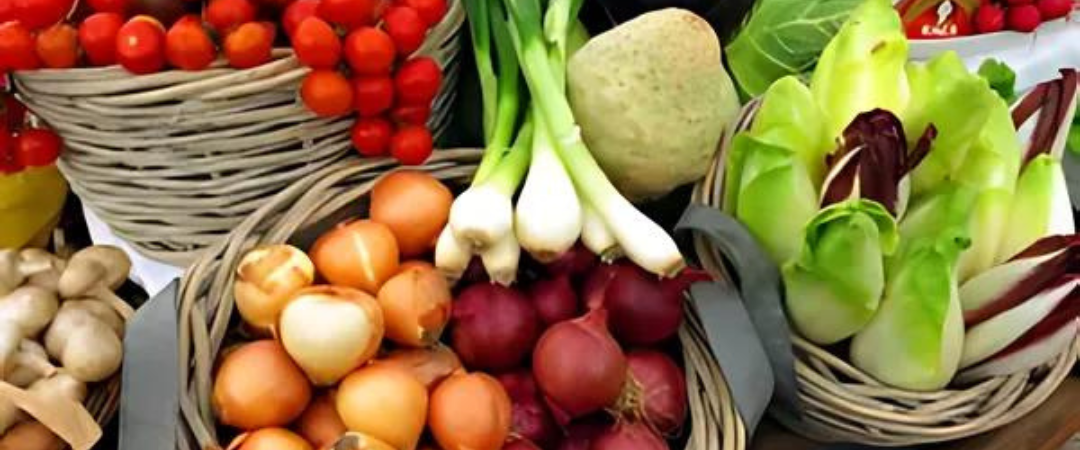Tips for a Healthy Organic Diet on a Budget
Written By Emily Edmonds, L.Ac.

Anyone looking at the news these days is worried about the economy and how inflation has impacted it. In particular, we have seen an impact upon food prices. This has made it understandably difficult to shop for healthy food, as most of us are aware – organic food costs quite a bit more already. I always advocate for patients to eat local, organic if possible but how to do this in a cost effective way is challenging for those on a budget.
Here are some tips below to get you started on eating a healthier diet on a budget:
Clean Fifteen – Optional
The list of foods below are known as the “clean fifteen” and these are foods which if grown using non-organic methods are considered to be safer than the “dirty dozen” below as they are less likely to be contaminated by pesticides and herbicides. These foods include:
Avocados
Sweet Corn
Sweet Peas (Frozen
Asparagus
Mushrooms
Cantaloupe
Pineapple
Honeydew Melon
Mangoes
Onion
Kiwi
Watermelon
Papaya
Cabbage
Sweet Potatoes
So if you are on a budget, cabbage with chicken and mushrooms is a really good dish and very easy to prepare. Please always make sure you always wash your produce, especially mushrooms! I also recommend for the above foods that if they have a skin to peel them before preparing and do not consume the peel.
Dirty Dozen – Always Organic!
The list of foods below are known as the “dirty dozen”, which are foods that are known to be the most harmful if they contain pesticides are herbicides since they cannot be washed off. Always go organic for these. The list of these foods include:
Strawberries
Grapes
Spinach
Peppers including Bell peppers and hot peppers
Kale, Collard, Mustard Greens
Cherries
Nectarines
Peaches
Apples
Pears
Tomatoes
Celery
Most of these foods are in season in the summer, and you can find these relatively inexpensively at local farmers markets.
Eat Seasonally and Locally!
Foods that are grown locally and that are in season are usually less expensive than out of season food grown abroad.
Most often you will also find locally grown, seasonal produce at farmers markets for less than you would find at conventional grocery stores. The food will also be fresher as well and often tastes better.
Buy in Bulk
If you are shopping for a large family, buying in bulk can help offset the grocery bill. Costco has an excellent selection of organic produce. As demand for organic has grown, their selection has grown as well. Every time I go to Costco I am always pleasantly surprised by what they have to offer.
At conventional grocery stores, buying in bulk can be helpful, especially beans, lentils, and nuts. It is a great option b/c you can just buy whatever amount you need for that week.
Prepping
Always buy your vegetables whole and intact. If you buy them precut or pre-peeled, they will invariable cost more.
Farmers Markets
As I mentioned before, farmers markets can be a great way to save. You can also just buy what you need, which cuts down on waste. It’s also a great activity for the family to go out together and go for a walk, while shopping for food for the week!
That being said, as Farmers Markets have increased in popularity over the years, so has their prices. This is more often true of things like seafood and meats, which can be purchased for less when part of a subscription package online. It’s also more expensive for the “value added” items such as prepared foods, jams, pastas, and baked products. But for fruits and vegetables, it can still be a good deal.
Also, there are some farmers market producers who haven’t yet been able to qualify for the organic “stamp” yet but their methods are organic. Talk to the producers, get to know them and find out what their growing methods are. I once bought some sunflower sprouts from a farmer who hadn’t yet qualified for the organic label, but was using organic methods and not using pesticides or herbicides at all. They were much, much cheaper than I could buy at Whole Foods and the taste was much fresher and better.
Avoid “Value Added” and “Pre-Prepped” Items at the Store
Although many of us use these (me = being sheepish) to save time, the truth is that buying vegetables pre-cut or foods that have been pre-assembled is much more costly than purchasing food in it’s whole form and preparing it. In other words, those delicious chicken kebab skewers at the deli in the grocery store are several times more expensive than making your own using the same exact ingredients.
Also, pre-cut vegetables will go bad faster. Grocery stores often pick the vegetables that weren’t picked up the previous day to be pre-cut. Then, they put it on the shelf and more than double the cost. Ever purchased pre-cut butternut squash? You’d better use it that same day, b/c it goes bad quickly after that.
If you don’t know how to chop vegetables, watch videos online, take cooking courses, or do like I did and buy a cheap food processor on eBay and let your vegetables chop themselves.
Also, while that bottle of organic truffle hot sauce might be really tasty, ask yourself if you really need that? Grocery stores put up a lot of “value added” products in the front of the store to get you to buy more and also mark up the price. If you buy enough of these, it can more than double your grocery bill.
Stock Up on Deals and Promotions
Save coupons and stock up on foods that can be frozen when they go on sale. Shop around to different grocery stores and find out what deals they have or promotions.
Meal Planning
I probably should have put this closer to the top of the list, but over the years I cook so much that I can go on the fly. However if you aren’t used to cooking a lot of your own meals, it is best to plan them. There are lots of apps out there and services that will show you how to do this, or you can print out pdf files that will allow you to plan. This is great b/c it cuts down on food waste as well. There are even pre-planned meal plans available that you can download or print out!
What I like about meal planning is that it completely removes the stress of the “what are we eating for <dinner, lunch, breakfast>?” conundrum, which is often when families will simply eat out or order take out. It also cuts down on the number of trips you need to take going to the grocery store.
Grow Your Own Garden!
This is by far the cheapest way and also the cleanest, healthiest, most sustainable and natural way to eat a healthy diet. You will know where your food comes from, how it is grown, and it is as local as you can get. Many gardeners and farmers tell me all the time how much personal satisfaction they get out of growing their own food. The connection with nature, the ability to be self sufficient, and the improvements to their health is what many people cite as all benefits to growing their own food.
While you won’t be able to meet all of your food needs growing food in a small area, you will at least be able to offset them. And you will be gaining an appreciation for how food is grown! So if you have the space and the ability, try it out. Start with just herbs, like thyme or basil and go from there.
In summary, I hope all of these tips can help you to be more mindful of what you are eating and also not break the bank. And, of course, visiting your acupuncturist can be helpful for you if you are wondering what kind of diet is best for you as well. All of our bodies are different and not every diet is best for every person. For example, if you are someone who does poorly with nightshades, then you don’t need to worry about buying organic bell peppers and tomatoes. We can help you to customize your diet in a way that works for you, so that you can get the most out of your nutrition.
Please click here if you would like to schedule an appointment!
In Health,
Emily Edmonds, L.Ac.





